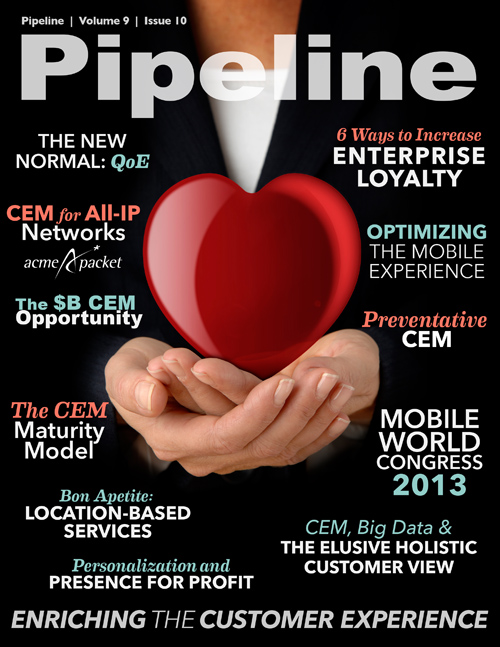Balancing the Mobile Broadband Equation
By: Rick Corker

During my recent travels I happened to see a towering billboard for a major US communications service provider (CSP) that shouts, âFewest dropped calls!â Without a hint of irony my driving companion said, âWhat if airlines advertised âFewest plane crashes!â Bet it would really draw in the customers, wouldnât it?â
That telling remark speaks volumes about the sad state of the customer experience among CSPs today. According to the 2011 Customer Acquisition & Retention Study commissioned by Nokia Siemens Networks (NSN), for which it surveyed almost 15,000 mobile users across 17 nations, customer dissatisfaction is on the rise globally: nearly half of those surveyed were heavy users, and a third of them were likely to churn in the coming year.
But there is a bright side. NSNâs annual study started in 2005, and since â09 the number of customers whoâve cited service quality as the reason theyâve stayed with their CSP has doubled.
Exploding traffic. Of course, given the exponential growth in mobile broadband traffic, itâs been a huge challenge for CSPs to maintain that quality. Turbocharged 3G and LTE network deployments are spurring ever-greater demand for data-intensive applications like streaming video (YouTube, Skype), which comprises 40 percent of all data traffic, and streaming music (Pandora, Spotify). Corporate earnings, however, arenât growing at the same rate; simply put, revenue per bit is tending to lag far behind cost per bit.
This stark imbalance in the CSP business model has forced many providers to charge more for their data packages. While doing so might generate revenue in the short term, it can also alienate many customers and provoke further churn in the long term. Itâs a classic test of pricing versus demand elasticity, and as it plays out, CSPs learn the hard way that it costs much more to acquire new customers than it does to retain existing ones and maximize wallet share.Turning the tables. When customers churn itâs not as if they stop using communications services once and for all â they just change providers. One CSPâs loss is anotherâs gain, and the forward-thinking ones can capitalize on general customer dissatisfaction by differentiating themselves with consistently high-quality service, potentially earning a large payoff in the process.
For example, when NSN analyzed one prominent CSP in the United Kingdom it found that by raising customer satisfaction rates to meet average levels found in other parts of Europe, the CSP could cut its churn rate by 7 percent, thereby generating a cumulative four-year increase of nearly $325 million in gross profits.
Premium services. At the same time, CSPs can boost revenue with premium-priced advanced services for heavy users. In fact, results from NSNâs 2011 study indicated that 53 percent of heavy users of advanced services were willing to pay extra for first-rate network quality. Whatâs more, 36 percent said they would pay extra for personalized mobile services.
To gain the benefits of greater competitive differentiation, customer loyalty and profitability, CSPs need to focus on pursuing the broad, cross-functional strategy known as customer experience management (CEM). This approach seeks to optimize the entire customer life cycle of individual users, from their initial awareness of a CSPâs brand and its offerings to their evaluation of that CSP against competitive alternatives, their purchase and use of the chosen CSPâs services and, ultimately, their advocacy of the CSPâs brand to other prospective customers.





















